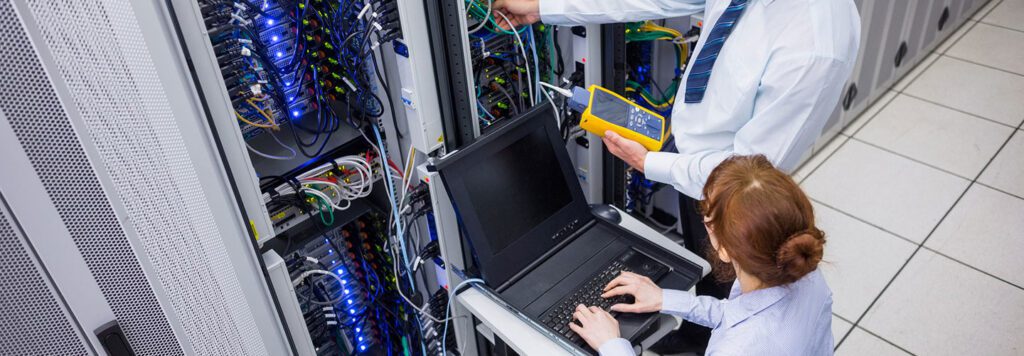Maintenance dispatching is central to the efficiency and co-ordination of the overall maintenance processes, especially in numerous industries. It is a tactical process where by the dispatchers have to map the requests for repair and maintenance. And assign the company’s maintenance personnel and resources to meet those demands.
Thus, the optimization of this particular type of working schedule helps to reduce the time that an organization remains idle. And thereby boosts productivity and efficiency. This article brings focus on maintenance dispatching purposes, problems, and approaches to the best practices of its application.

Importance of Maintenance Dispatching
Key Challenges of Maintenance Dispatching
As it turned out, it has many advantages to provide. But it also has numerous problems that have to be solved to ensure smooth functioning. Some common hurdles include:
Real-time Communication: The communication flow between dispatchers and technicians should be smooth and should be kept optimal. The continuity also means that dispatchers require updates on the completion status of the tasks. The readiness status of the equipment and any factors that were unforeseen for modification of the assignments.
Skill and Availability Matching: It becomes challenging to match the right technician having the right skills with the specific task that need to be accomplished. Experience, licenses, workload of existing technicians and qualification must be taken into account in order to ensure. Tthe closest qualified technician is posted to the current call.
Unforeseen Events: It should be also flexible to adjust to number of circumstances that may occur like changes of priorities, emergencies or equipment malfunction. Having the capacity to change or relocate tasks quickly is highly important so as not to affect productivity.
Effective Strategies
Centralized Management: Implement a central issuing center which coordinates all the requests for maintenance. This makes management of the tasks to be accomplished as well as the ongoing operations to be more efficient due to enhanced. Communication and timely assignment of the tasks to be accomplished.
Real-time Monitoring: Integrate digital tools that help track achievement of tasks, the position of technicians and availabilities of tools. This way, dispatchers will have the right information incorporated into their decision-making process and modify the strategy accordingly.
Automated Task Assignment: The other major issue is the proper utilization of intelligent algorithms or some AI applied tools to assign tasks according to their priority, technician location, capacity, and expertise. This kills the odds of making mistakes and does ensure distribution of workload is done in the right manner.
Mobile Connectivity: Equip the technicians with Smart phones or some other application which would enable them to get full details of the assignment, report their status and interact with the dispatcher. Mobility improves and speeds up communication, eliminates paperwork and allows for fast information sharing.
Continuous Evaluation and Improvement: Continuously conduct feedback in relation to the dispatching process through the assessment of its associated KPIs including response time, resolution time and more on customer satisfaction. Analyze possible improvements on the tactics executed and the factors that contribute to the inefficiency in the dispatching process. You may also contact our pages in thesocial media for additional data.
Maintenance Dispatching
Maintenance dispatching is a process or service that involves coordinating. And assigning maintenance tasks or requests to appropriate personnel or technicians. It is commonly used in various industries, such as facilities management, property management, and service-oriented businesses.
Contact Us
Frequently Asked Questions(FAQ’s)
What challenges can arise?
This may comprise real-time communication challenges, coordinating a technician’s skills. And working hours with the tasks allocated, and addressing incidental occurrences or organizational crises.
How can technology aid maintenance dispatching?
Maintenance dispatching is easier with the help of technology. It assists in monitoring work and tools in real-time, self-schedules tasks, allows technicians. To connect through mobile devices and ranges across analysis of tasks and tools for optimisation.
Are there some best practices of effectively dispatching maintenance?
Some best practices for managing maintenance dispatching are to adopt a common management control system. Employing the integrated monitoring technology, using tasks’ automation. Providing mobile access to technicians, and measuring and improving the dispatching strategies with KPI.
How does maintenance dispatching help support overall operation?
MoreOver, it enhances functional productivity by diminishing the reaction and resolution periods. Managing workers’ assets productively, standardizing processes. And guaranteeing that maintenance activities are properly prioritized and distributed to technicians.
What Has Been said about the benefits of introducing it?
MoreOver,advantages of adopting the maintenance dispatching include. Reduction of equipment downtime, operating interruptions, consumers’ satisfaction, optimality of resources, orderliness in the accomplishment of tasks, and efficiency.
How does this method affect the quality of customer service?
Maintenance dispatch is related to customer service because it is concerned with the quick and efficient handling of maintenance problems. This entails that the customer’s order is met adequately, hence improving their satisfaction levels and hence they will be loyal to the business.
What role does data analysis play?
Data analysis plays a crucial role in maintenance dispatching by providing. Insights into key performance metrics, such as response times, resolution times, technician efficiency, and resource utilization. Analyzing this data helps us identify areas for improvement and make informed decisions to optimize dispatching processes.
Conclusion
It is a vital component of effective maintenance management. After that, we ensure that we handle repair and maintenance tasks efficiently and promptly. As well as by leveraging modern technologies, optimizing resource allocation, and fostering effective communication, organizations can streamline their dispatching processes.
As much as minimize downtime, and achieve higher levels of productivity. After that embracing these strategies will undoubtedly pave the way for successful maintenance dispatching. As a result, they contribute to the overall success of an organization.


